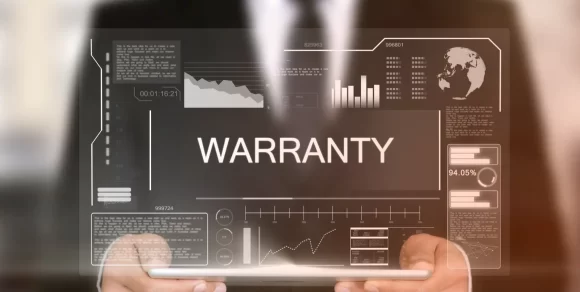- ClearBlog
How to Improve OEM-Dealer Collaboration: A Step-by-Step Guide
Table of Contents

In the past years, OEMs (Original Equipment Manufacturers) and dealers have mainly been focused on self-optimization. New ERP systems, new workflows, CRM systems and much more. However, achieving true customer-centric excellence extends beyond merely digitizing and streamlining operations within isolated entities. In fact, it requires a robust OEM to dealer collaboration, a partnership that is increasingly vital in today’s highly competitive environment.
The essence of their relationship remains unchanged, yet the stakes have risen. Service offerings beyond the mere product or machine itself have become a critical competitive differentiator. Only through effective cooperation across the supply chain can this level of excellence be achieved. As it happens in particular in the automotive insutry, that’s the only way to distinguish industry leaders from the rest.
Relationship Dynamics Between OEMs and Their Dealers
In the realm of OEM-dealer relationships, a common challenge is that OEMs are usually blind about actual end-customer demand and available dealer stock. Whilst dealers are usually suffering to find the right balance for their stocks, resulting in either being out of stock or high demand of working capital. In order to truly fulfill customer needs and guarantee machine uptime out there, dealers and their OEMs must closely collaborate. Their ultimate goals should be ensuring global part and service availability. Prioritizing the aftermarket is crucial; by equipping both parties with the right mixture of visibility, exchange of information and sophisticated parts & service planning, both can benefit from increased customer loyalty, sales and reputation.
Overcoming the barriers to full collaboration between OEMs and dealers requires strategic planning and implementation. The benefits of such an endeavor are manifold, offering substantial value through enhanced efficiency and strengthened relationships.
Common Challenges in OEM-Dealer Relationships
To effectively address and mitigate the sources of friction, it is essential to first identify and understand these challenges thoroughly. Implementing a robust strategy, which may include enhancing communication channels, improving logistic processes, and employing advanced data analytics, can lead to more cohesive and productive partnerships.
OEMs and their dealer networks often encounter several recurrent challenges. Those can impact their operational efficiency and customer satisfaction. Addressing these challenges effectively is crucial for maintaining a strong, mutually beneficial relationship. Here are some of the most significant pain points and strategies for overcoming them:
Democratizing Data Along the Network
One of the fundamental issues is the hesitation around sharing data freely within the network. The risk of withholding data is significant, often leading to a lack of necessary information that could enhance service delivery. To overcome this, OEMs and dealers must establish trust-based frameworks that encourage data sharing. Implementing standardized data-sharing agreements that emphasize mutual benefits can help alleviate concerns about data misuse or competitive disadvantage.
OEMs oftentimes seek visibility into the end-customers demand, dealer stocks and service histories of machines from the dealers. Dealers on the other hand seek easy accessibility of parts and price masters, IoT information, service profiles and order status. They should constantly be exchanging all of this information on one platform, and allowing for direct transactions. This would not only increase efficieny and visibility on all ends, but also foster a severe reduction of systems in use.
Lack of Data Integration
Often, OEMs and dealers operate on different systems, making data exchange cumbersome or impossible. This can be addressed by adopting universal or adaptable software solutions that facilitate seamless data integration. Investing in middleware or employing APIs that allow different systems to communicate effectively can bridge the gap between disparate technologies. This especially addresses the connection of OEM order, IoT, master data and service-relevant systems with the dealer DMS systems.
Poor Inventory Management
Poor inventory management and communication about parts availability at the dealer level can severely disrupt operations. Ultimately causing machine downtime and customer frustration. OEMs should consider implementing advanced inventory management systems that goes beyond their owned parts structures. They need to allow for visibility at the dealer warehouses and control into the entire network for OEMs. The result is less time spent on tiresome planning processes for dealers. Such systems are also referred to as RIM Solutions –Retail Inventory Management Solutions. These are fully integrated, end to end parts planning solutions allowing for seamless OEM-Dealer part availability.
Lack of Efficient Service Planning
A lack of detailed information about service planning and machine characteristics can hinder efficient scheduling of repairs. Both, OEMs and dealers sit on a lot of data that has a tremendous potential of combined intelligently. OEMs can leverage IoT technology to provide dealers with relevant information to service more proactively. While dealers can share their service histories to receive more accurate initial stocking lists in the future. Let alone, being better prepared for warranty cases and getting more accurate part plannings and proactive service alerts. This not only helps in planning but also ensures that servicing is proactive rather than reactive.
Inefficient Order System
The absence of an efficient ordering system can complicate the parts replenishment process, leading to delays and dissatisfaction. Developing a more robust, user-friendly e-commerce system that dealers or even end-customers can use. With that they could place orders easily and track their status in real-time will help smooth out the replenishment process.
By addressing these challenges, OEMs and dealers can significantly improve their collaboration, leading to better operational efficiency and enhanced customer satisfaction. It is essential for both parties to continuously seek improvements in technology and communication to adapt to the evolving business landscape.

Enhancing OEM-Dealer Collaboration Through Technology
The adoption of advanced technologies such as cloud democratizing data, IoT connecting to the end-customers and the rise of microservices plays a pivotal role in transforming the dynamics between OEMs and dealers. This technological integration facilitates a higher degree of transparency and communication. Which are essential for minimizing the common misunderstandings. Operational delays then, often lead to dealers switching OEMs, or end-customers walking to the competition.
The cloud and the underlying connector technologies yield a tremendous potential to facilitate an end-to-end digitized supply chain. Whilst technologies like IoT in combination with relevant software and the right set of big data analytics provides the baseline for a never seen way of proactive selling, servicing and customer excellence. This proactive approach not only reduces downtime but also strengthens trust and dependability among dealers as well as the end customers.
Cutting Down Response Time to Dealer Requests
Moreover, cloud-based platforms can revolutionize how OEMs and dealers interact and manage workflows. These platforms allow for seamless data sharing and communication across the supply chain, ensuring that everyone involved has access to the latest information, from inventory levels to delivery schedules. This level of integration helps in streamlining operations and significantly cuts down the response time to dealer requests, which is often a friction point in the OEM-dealer collaboration. By leveraging these technologies, OEMs not only improve their operational efficiency but also enhance overall customer satisfaction. Ultimately leading to a sustainable competitive advantage and higher customer lifetime values.
Benefits for Every Party Involved
Enhancing collaboration between an OEM and its dealer network streamlines operations. But not only that: it also fosters a mutually beneficial relationship that can significantly boost business performance. Here’s a refined list of the key benefits derived from an effective cooperative strategy. They are supported by insights from industry research:
- Enhanced Visibility Across the Supply Chain: Integrating communication systems and data-sharing enables OEMs to have a comprehensive view of the entire supply chain. This transparency helps OEMs anticipate dealer needs and respond with more accuracy and speed. Thus, ensuring dealers are well-equipped to meet customer demands efficiently.
- Improved Forecasting and Inventory Management: With the flow of consistent and accurate data, OEMs can utilize advanced forecasting algorithms to enhance the efficiency and cost-effectiveness of inventory management. This reduces excess stock, cuts down on storage costs, and minimizes the risk of stockouts, thereby ensuring that spare parts are available when needed without overcapitalization.
- Better Negotiation Leverage: Strengthened relationships and clear communication channels between OEMs and dealers allow for more effective negotiations. This can lead to better terms such as improved pricing, exclusive deals, or enhanced support services which benefit both parties.
- Increased Customer Loyalty: By ensuring that dealers receive timely support and efficient service, OEMs help improve the end customer’s experience. Satisfied dealers are more likely to deliver exceptional service to customers, which in turn boosts customer satisfaction and loyalty, a crucial factor in competitive markets.
These benefits collectively contribute to a more robust and responsive network that not only meets current demands but is also well-prepared for future challenges.

Working Tips to Improve OEM-Dealer Collaboration
To effectively maximize Customer Lifetime Value within an OEM-dealer collaboration, it’s crucial to implement a structured approach that fosters ongoing improvement and feedback. Here are some elaborated steps along with additional insights that can be integrated into the strategy to ensure it’s both actionable and effective:
Step 1: Conduct a Quality Survey
The main objective of this step is to gauge dealer satisfaction with the tools and resources provided by the OEM. Understanding their level of contentment can help identify areas for improvement, streamline operations, and enhance the overall effectiveness of the collaboration. Take care of design, distribution, data collection and analysis.
Lastly, share the results with key stakeholders within the OEM and discuss actionable insights. Develop a plan to address the concerns highlighted and explore ways to enhance the tools that are well-received. Communicate back to the dealers about the steps you are planning to take based on their feedback, thus closing the feedback loop and building trust.
Step 2: Provide Access to Everything Dealers Need
This encompasses a wide range of materials and information Including comprehensive product catalogues, detailed service manuals, real-time inventory levels, marketing materials, and advanced sales tools. By providing a centralized, easily accessible platform where dealers can find everything in one place, OEMs facilitate smoother operations and empower dealers to provide exceptional service to the end customers.
Step 3: Aggregate Data and Integrate Tools
Enhancing OEM-dealer collaboration involves the aggregation of tools and resources to create a unified platform that dealers can access easily and efficiently. This step is crucial for streamlining communication, improving data consistency, and reducing operational friction. Integrate various tools—such as inventory management systems, customer relationship management (CRM) software, parts ordering systems, and service scheduling platforms—into a single, cohesive interface. This way dealers are provided with a more intuitive and user-friendly experience.
Step 4: Optimizing Parts Planning and Proactive Servicing Through Advanced Analytics
This involves using predictive analytics for accurate parts forecasting, ensuring dealers have the necessary inventory before demand spikes. Additionally, integrating real-time data from IoT-enabled devices allows for proactive maintenance scheduling, preventing machine downtime and extending equipment lifespan. By providing dealers with tools for automated replenishment and maintenance alerts, OEMs help streamline operations and improve service delivery, enhancing overall customer satisfaction.
Step 5: Establish a Robust Feedback Loop
Implementing a continuous feedback loop is essential in any collaboration. This means setting up regular check-ins and systems for dealers to provide feedback on their experiences with OEM support, product quality, and the overall partnership. This could involve periodic surveys, direct interviews, or digital platforms that allow for real-time feedback. This step ensures that any issues are promptly addressed.
Ensuring Uptime for the Highest Possible Customer Lifetime Value
Implementing a feedback loop is as important as maintaining it. Ensuring uptime and maximizing customer lifetime value are central to strengthening OEM-dealer relationships. By implementing and maintaining a robust feedback loop, OEMs and dealers can continuously improve their collaboration. This will lead to better service delivery and increased customer satisfaction. Here are the key takeaways from the discussion on enhancing OEM-dealer collaboration:
- Streamlined Communication and Data Sharing: Establishing a unified communication system and sharing data across the network increases transparency. Moreover, it allows OEMs to respond swiftly and accurately to dealer needs.
- Technology Integration: Employing advanced technologies like IoT and cloud-based platforms helps monitor real-time machinery status. Allowing then to predict maintenance needs, and streamline workflows, thus reducing downtime and operational friction.
- Effective Inventory and Service Management: Implementing predictive analytics for parts planning and inventory management ensures that dealers have the right parts at the right time. Finally enhancing service efficiency and customer satisfaction.
Continuous Feedback and Improvement: Regular quality surveys and feedback mechanisms are vital to understand dealer satisfaction. They permit to improve tools and resources, and foster a culture of continuous improvement.
These steps collectively contribute to a more robust, efficient, and responsive network. This not only meets current demands but is also well-prepared to adapt to future challenges.
FAQs
What is an OEM relationship?
OEMs, or original equipment manufacturers, create software that is utilized as parts in products sold to customers by other businesses. Partners who are OEMs (original equipment manufacturers) are businesses whose software can be integrated into applications or products that are proprietary.
How does collaboration with dealers impact customer experience?
Collaboration between OEMs and dealers enhances customer experience by ensuring better product availability and service quality. It allows for quicker and more accurate responses to customer needs, ultimately leading to increased customer satisfaction and loyalty.
What is an OEM in the automotive industry?
What is an OE dealer?
An OE dealer in the automotive industry is a dealership that sells new vehicles sourced directly from the original equipment manufacturers (OEMs). These dealerships typically offer the full range of a manufacturer’s new vehicles, along with certified service and parts that are specified or produced by the OEM.
Download The Free OEM How-To Guide “Boosting aftermarket performance in a decentralized dealer network”
In the whitepaper you’ll learn:
- Why winning in the aftermarket is a crucial pillar, not just a nice-to-have
- The untapped potential of parts planning among numerous OEMs
- The tangible benefits of enhancing aftersales through a unified downstream supply chain
- A case study: How AGCO supercharged their customer fill rates by a whopping 43% by transitioning from a blind spot in supply chain visibility to an interconnected dealer ecosystem
William Barkawi
More articles like this
- ClearBlog
- Max Wies
- ClearBlog
- Max Wies
- Expert Knowledge
- William Barkawi


